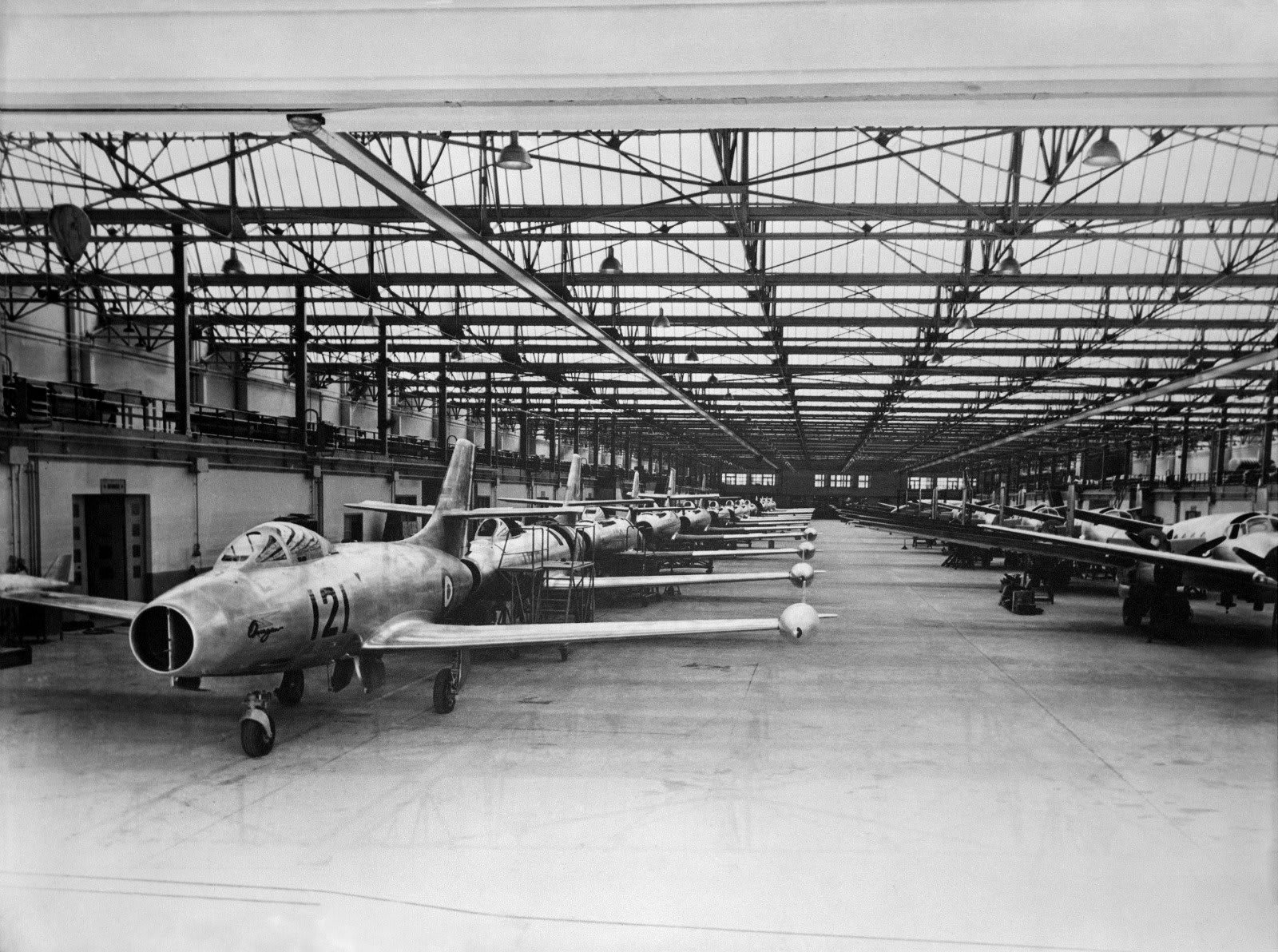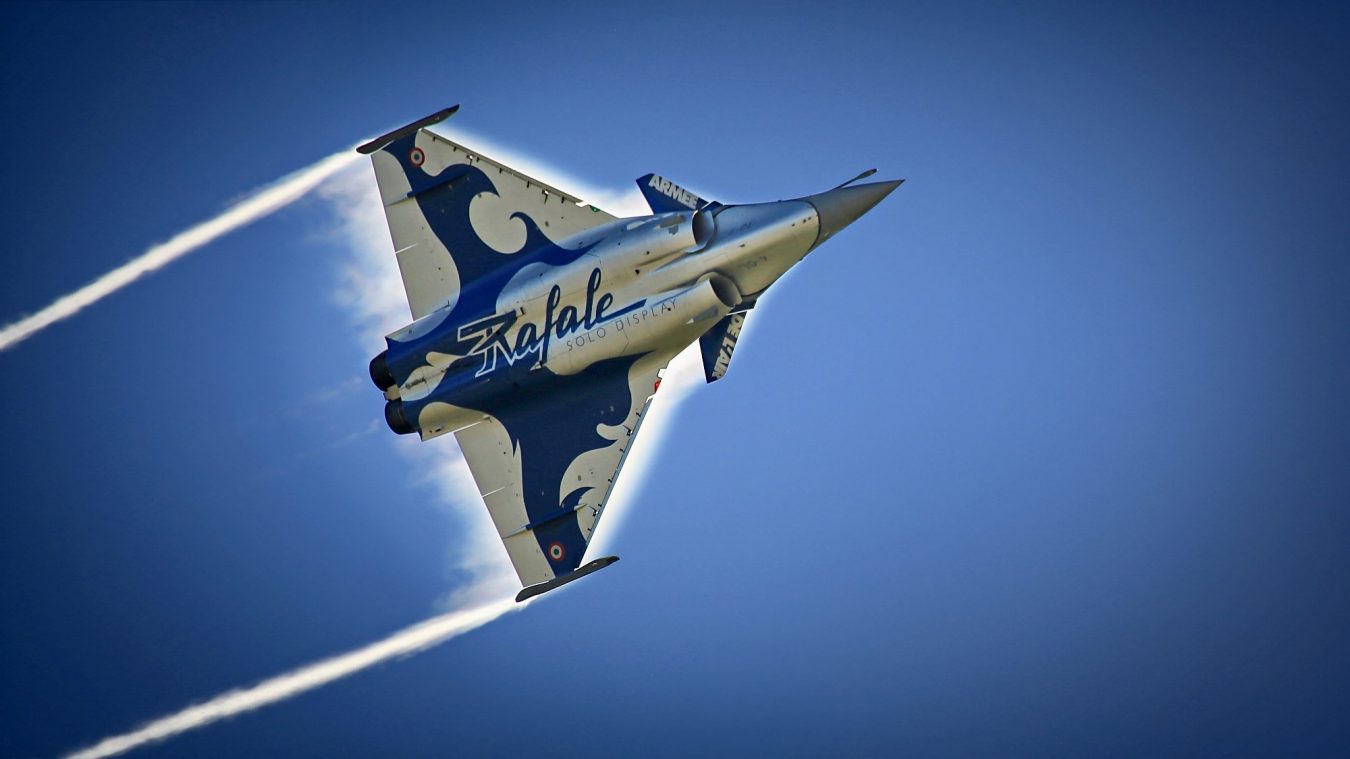The Dassault Rafale, formerly dubbed “the cursed aircraft,” has evolved into one of the world’s most sought-after fighter jets. Despite a long history of being unable to attract international customers, the 4.5 generation “omni-role” fighter jet is now at the top of its game in Dassault’s long history of producing fighters.
MARS Helicopter — Designed To Operate On Red Planet, NASA To Test Its ‘Super Chopper’ In Asia
However, over 70 years ago, Dassault produced a historic fighter aircraft called ‘MD 450 Ouragan’. The MD 450 Ouragan, designed and produced in France, laid the groundwork for the country’s future military aircraft industry to produce advanced fighter jets like the Mirage 2000 and the Rafale.
The French Air and Space Force (AAE) and Dassault Aviation are set to display an MD 450 Ouragan and a two-seater Rafale to commemorate 70 years since the first mass-produced, French-designed jet aircraft entered service.
The planes will be showcased in an exhibition titled “From the Ouragan to the Rafale, 70 years of industrial and operational excellence”.
A vintage MD 450 Ouragan no. 297, leased by the AAE to the Association Espaces Aero Lyon Corbas (EALC), and a prototype Rafale B01 held by the French Directorate General of Armaments (DGA) are the two aircraft that will be on exhibit.

The first mass-produced French fighter, the MD 450 Ouragan, entered service with the Air Force in November 1952. It was also the first post-World War II French aeronautical military hardware to be exported to friendly countries.
The Rafale is the newest iteration of France’s technological excellence in jet fighters, which began with the Ouragan and continued with the Mystère, Mirage, and Jaguar families, operated by more than thirty air forces worldwide.
Rafale has become one of the most famous aircraft in the world, with several countries already operating the aircraft while others are awaiting delivery or are in advanced stages of talks with Dassault Aviation.
France has been flying the Rafale fighters since 2006, which have proved their combat capabilities in Afghanistan, Libya, and Mali. Rafale is often referred to as the latest incarnation of the Ouragon, making the historical aircraft more worthy of attention and celebration in France.

Marcel Dassault’s Marvel Manufactured In 18 Months
After the Second World War, the French aeronautical industry started researching, developing, and designing an array of aircraft on mission mode.
Marcel Dassault, the man behind the aerospace giant, believed he could contribute to the jet aircraft section. Thus the Ministry of the Air allowed him to participate in a competition for interceptor fighter planes.
The first sketches for the aircraft were published in October 1947. Marcel Dassault signed the first contract to design, manufacture, and deliver three interceptor fighter planes on December 30. The prototype was built on April 7, 1948, just six months after the first sketches were drawn on paper.
The small Dassault team designed the simplest airframe feasible, based on knowledge gained on the MB 150 series of fighters and its variants and reviving the Bloch aircraft’s standards from the years before the war.
#CeJourLà #OnThisDay – Le M.D 450 Ouragan, mis au point par les ingénieurs de Marcel #Dassault, est le premier chasseur à réaction français construit en série. Le premier de trois prototypes effectue son vol le 28 février 1949, piloté par Constantin Rozanoff. pic.twitter.com/Z7tZyoEXvb
— Musée de l'Air et de l'Espace (@MuseeAirEspace) February 28, 2020
On February 28, 1949, the Ouragan prototype MD 450 01, piloted by Kostia Rozanoff, flew for the first time at Melun-Villaroche. Dassault had converted a proposal into a reality in 18 months. On August 31, 1949, Air authorities placed an order for 12 pre-production aircraft based on the positive results of testing conducted at the State’s flight test center.
During the development of the Ouragan, the French parliament passed a five-year plan (1951-1955) that included a fixed aviation program. The Secretariat of State for Aviation ordered 150 Ouragans on August 31, 1950, and later increased to 450. It was eventually cut to 100 in 1952 in favor of the Mystère II.
The cost of 185 aircraft was funded by American military aid (MDAP) to Western Europe, owing to “off-shore” contracts. Dassault collaborated on production with several state-owned aircraft manufacturers, with the final assembly taking place at Dassault’s Mérignac site.
Congratulations @IAF_MCC on 88th #AirForceDay2020!
From Ouragan/Toofani in the 1950s to Mirage2000 & now #Rafale, France has always partnered with the Indian Air Force! pic.twitter.com/44e3qRxQmn— Emmanuel Lenain ???? (@FranceinIndia) October 8, 2020
For the first time since the 1930s, France finally exported a combat aircraft in 1953. India ordered 71 Ouragans, which they dubbed Toofani (Typhoons).
Later, the order was increased to 113 planes. They were deployed during India’s military takeover of Goa in 1961 and briefly for reconnaissance during India’s 1962 war with China. India then went ahead to buy the Mirage 2000 and Rafales from France.
In 1954, Israel too went the French way and placed its order for the Ouragan jets. It was Israel’s first French fighter since its inception and was used by the Israeli Air Force in both the Suez Crisis and the Six-Day War against the Arabs.
MD 450 Ouragan
The Dassault Ouragan was a single-seat, single-engine jet-powered fighter. It had a simple design, with a single divided air intake in the nose that transported air around each side of the cockpit to the engine directly behind the pilot.
The Ouragan was powered by a single Rolls-Royce Nene turbojet engine built by Hispano-Suiza under license.
The aircraft had a maximum range of 920 kilometers and a service ceiling of about 15,000 meters. The plane’s maximum take-off weight was 7,900 kilograms, while the unladen weight reached 4,150 kilograms. The key to the success of this aircraft was its multi-role capability – it was a fighter and a bomber.
The French pilots regarded the Ouragan as a stable platform for cannons and rockets. Ouragan’s wing was attached to the fuselage to attach the articulated landing gear beneath it. The gear retracted laterally under the fuselage and into the wing root.

A pitot head frontal air intake (for best in-take with no boundary parasite layer) was designed inside the fuselage, which also housed a twin air duct on each side of the pilot’s bucket seat, fuel tanks, and a chamber for the Nene jet engine. Since the plane was planned to climb to 39,000 feet, the cockpit was pressurized.
All stabilizers were carried in the vertical and horizontal fuselage, with the latter being effectively placed high on the rudder and well clear of the slipstream from the low-slung wing.
The aircraft was used in some roles in combat by both its foreign operators, India and Israel. Moreover, El Salvador got these aircraft from Israel and widely deployed them in the Salvadorian Civil War.
The aircraft paved the way for more advanced and cutting-edge fighter jets produced by the French military industry.
- Contact the author at sakshi.tiwari9555@gmail.com
- Follow EurAsian Times on Google News




